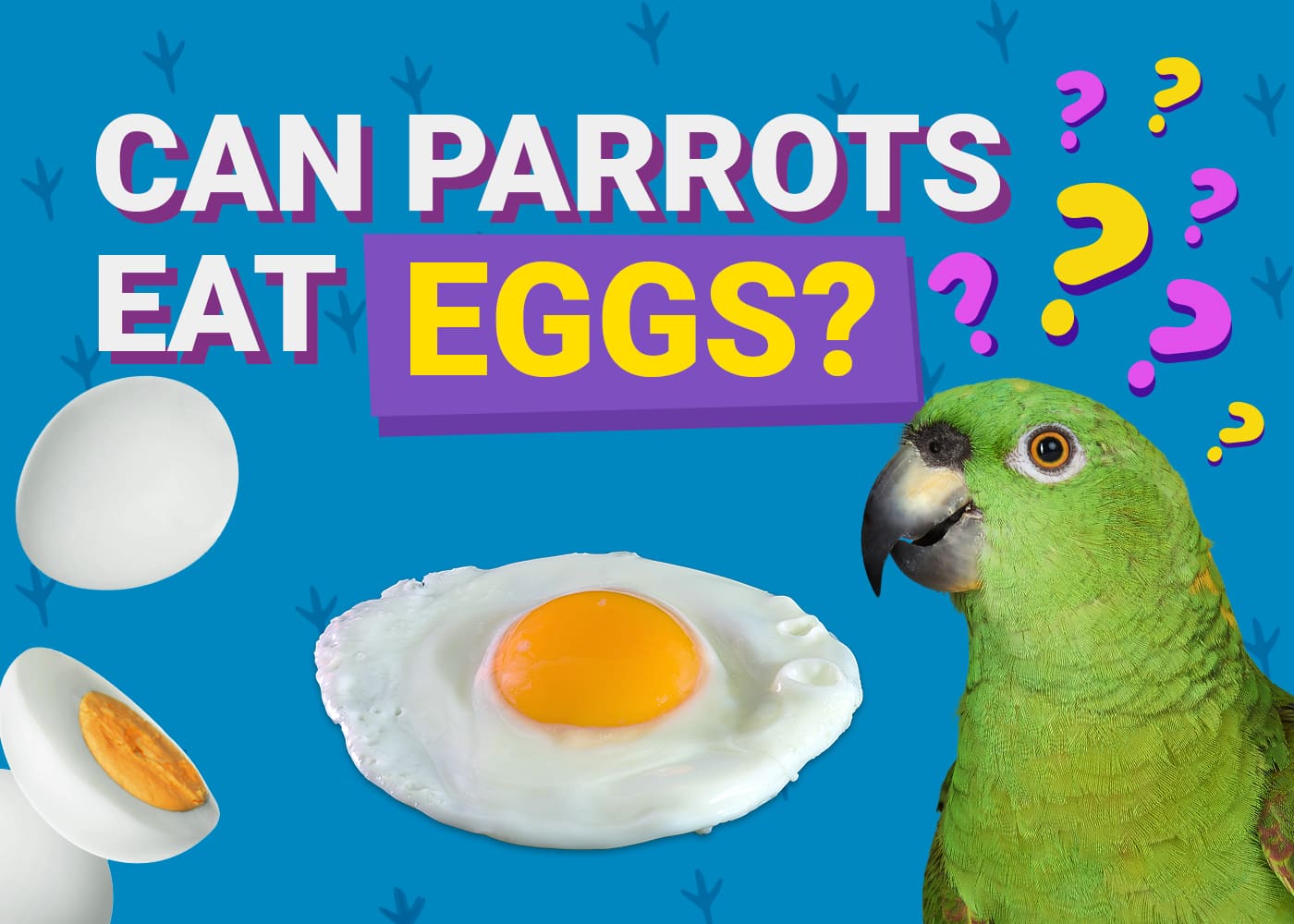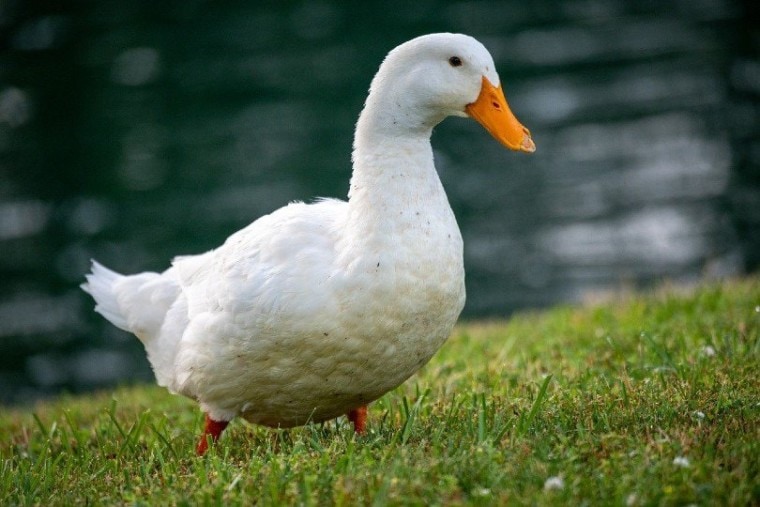
With over 100 breeds of ducks living around the world, it may seem challenging to determine which types are best for keeping as pets. Some birds are much louder than their cousins and are not suitable for homes with nearby neighbors, and others are skilled flyers that can escape your property when they’re frightened. Ducks are used primarily for meat and egg production, but some species make excellent pets. After studying the characteristics of different breeds, we created a list of the seven friendliest ducks to keep as family pets.
The 7 Friendliest Pet Duck Breeds
1. Pekin Duck

Not to be confused with the famous Chinese dish “Peking Duck,” Pekins are the most common duck in North America. The first Pekin ducks were brought to the United States in the 19th century and quickly became famous for their rapid development, attractive carcasses, and docile nature.
Pekin Temperament
Pekins sits at the top of our list because they’re friendly nature and gentleness around humans of all ages. Unlike most breeds, Pekins do not become irritated when you pick them up, and some even let you stroke their feathers. For families with young children, Pekins make great companions and play buddies. Although they’re sweet, they’re also very loud. They’re ideal for rural homesteads but not suburban areas.
Pekin Duck Appearance
Pekins are gorgeous birds with fluffy white plumage with a slight yellow hue. Their bills are yellowish-orange, and they have orange legs and feet. They have thick, long necks and short stubby wings that are inadequate for long flights. After several years of breeding and selection, most Pekins are flightless.
2. Cayuga Duck
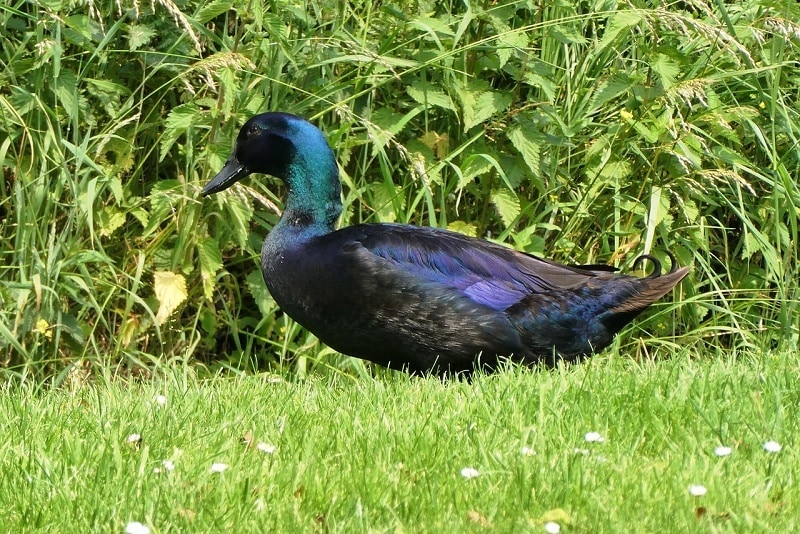
Like the Pekin, Cayugas were first seen in the United States in the early 19th century. Their exact history is still a source of debate, but historians speculate that the breed was developed from wild American Black ducks. However, they were soon overlooked when the Pekins became more dominant. Cayugas are hardy birds that can handle the harsh winters in the Northeastern United States.
Cayuga Temperament
Cayugas are docile around humans when they’re hand raised, and they are much easier to care for than other breeds that cannot find food on their own. Cayugas are skilled foragers that enjoy munching on insects and local plants, and they’re less likely to wander away from home than other breeds. They’re flightless birds with large breasts and short wings. They’re prolific breeders, and you have to limit the number of males in a flock unless you’re prepared for a large population.
Cayuga ducks have black feathers, a black bill, and an attractive iridescent green shade on their neck and heads. A darker blue hue is present on their wings. They’re considered ornamental birds that many people raise as bets, but they’re less common than other ducks and remain globally endangered.
3. Indian Runner Ducks
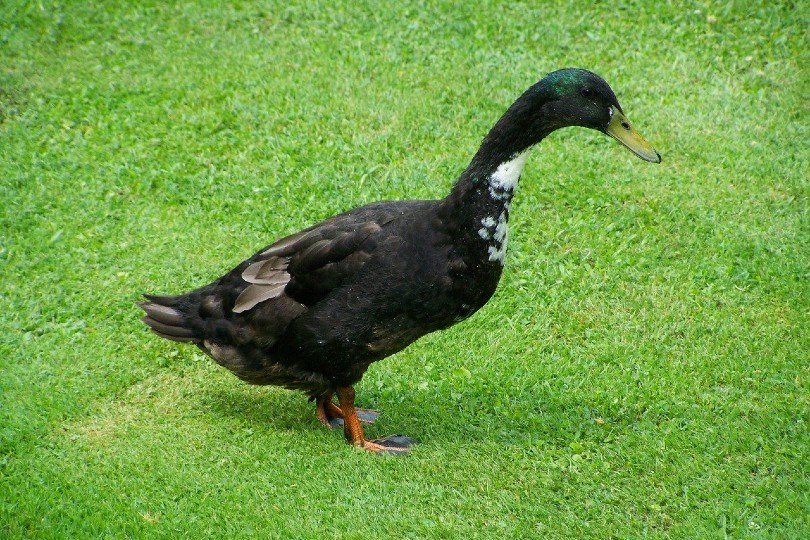
Hailing from Southeast Asia, Indian runners were introduced to Great Britain in the mid-1800s. Unlike most ducks, Indian Runners can run rather than waddle. Their long necks and erect stature make them appear more like penguins than ducks. They’re not fond of nesting or brooding, and their caretakers often have to search for their eggs. Indian Runners drop eggs in random places and at different times.
Indian Runners are intelligent and friendly ducks that warm up to their human owners. If they’re raised from birth and provided plenty of land to roam, they can establish bonds with their owners and eventually recognize their voices. Although they sometimes run like they’re preparing to fly, they’re flightless and must be protected from predators. They’re much quieter than other ducks, and only the females quack. The drakes make a guttural noise closer to a whisper than an authentic quack sound.
Indian Runners are probably unlike any duck you’ve seen before. Their legs are positioned farther towards the rear of their body and help highlight their erect posture. Their feathers can be various colors, including black, brown, white, blue, and dark brown. On average, they’re nearly half the weight of Pekin ducks. They have long skinny necks and orange feet.
4. Call Ducks
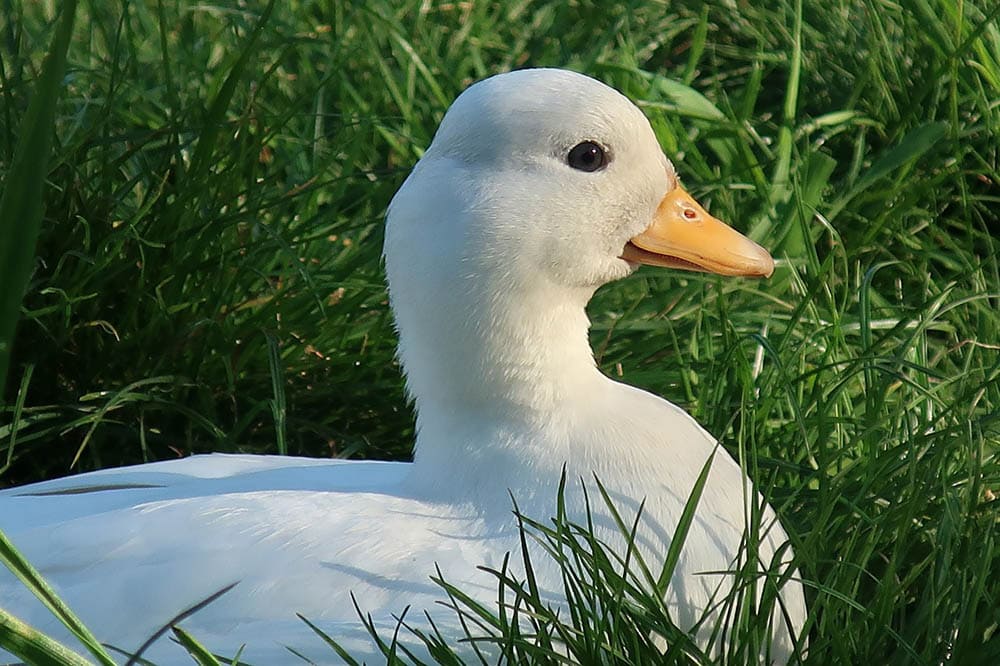
Introduced to the Netherlands and Great Britain in the 19th century, Call ducks are descendants of Mallards. They’re one of the smallest duck breeds, and as show birds, they’ve won more competitions than other duck species. They were first used as decoys to attract wild flocks to hunters in England. The bird was named for its loud quack that served as a “duck call” for luring unsuspecting ducks to their deaths.
After the decoy technique was outlawed in England and other countries, call ducks were mainly raised as pets and show birds. The friendly, adorable ducks are beloved by homesteaders and rural landowners.
Call ducks warm up to humans when they’re raised from birth, and they’re one of the best breeds for children. They’re so small and calm that kids can easily pick them up and carry them safely. Watching the comical birds waddling around is incredibly entertaining; they like to chatter when they’re exploring the land. Because of their deafening shrieks, Call ducks are not suitable for suburban settings.
Most Call ducks are black or white, but they can be various colors, including silver, magpie, blue-fawn, apricot, or silver and white. They look similar to their Mallard relatives, but they’re much smaller and lighter. Adult females only weigh around 20 ounces, and drakes are a little heavier at 25 ounces. They have orange bills and feet, and their necks are short and thick.
5. Mallard Ducks
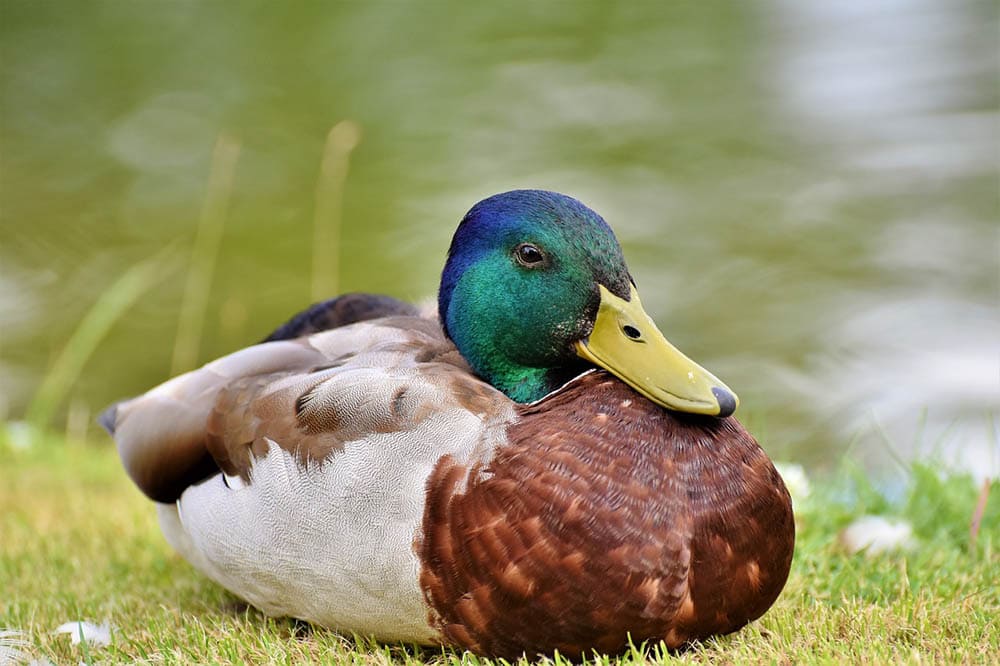
Except for the Moscovy ducks, every breed can trace its roots to Mallard ducks. They’re not processed for their meat as much as the Pekin duck, but their wild population is more extensive than any other duck species in North America. Wild Mallards can travel vast distances while migrating, and as pets, the birds are more capable of escaping their pens than other breeds.
When they’re hand-raised, Mallards are friendly towards their owners. They’re not as docile as Pekins, but they make excellent pets that can live 10 to 15 years in captivity. If they’re not able to swim during the day in a pond or kiddy pool, they can become anxious and aggressive. Mallards are dabblers genetically driven to lower their heads into the water to eat plant and marine life. Although they can make great pets, they’re not as easy for children to handle as other species.
Mallards are medium-sized ducks with dark feathers and a shiny blue patch on their wings. Drakes have striking, green heads, and the females have brown or tan heads with spotted feathers. The females are known for loud quacks, but males are quieter except during mating season.
6. Muscovy Ducks
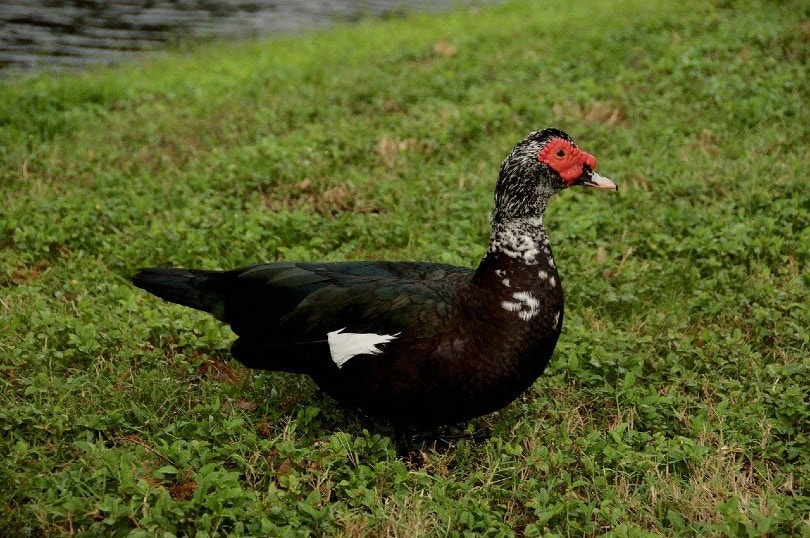
Muscovy ducks are one of the oldest breeds. They were discovered in South America in the 15th century by Spanish explorers, and most wild flocks still live in Central and South America. Feral Muscovy ducks are considered a nuisance in some countries; they nest in trees and often damage gardens and other landscaped plants when they’re looking for food. In North America, they’re raised by small commercial farms for their exquisite meat, but homesteaders often keep them as pets.
Unlike their wild relatives, Muscovy birds are not aggressive towards humans. When they’re raised as chicks, they can become attached to their caretakers. Unlike most ducks, the Muscovy does not quack. The female’s call is more prominent than the male’s, but some farmers call them “whispering ducks” because of their barely audible chattering. They’re excellent fliers, but small farmers clip their wings to prevent escape. If you live in a subtropical area, you can depend on a flock of pet Muscovy ducks to reduce your pest control bills. They excel at foraging roaches, mosquitos, ants, spiders, and other invasive insects.
Muscovy ducks can have several colors and pattern combinations, but most are white, pied (black and white), lilac, chocolate, blue, or buff. Drakes are much heavier than females and have prominent red warts around their faces and heads. They have hooked bills that help them out of their tree nests and sharp claws for climbing.
7. Rouen Ducks
Rouen ducks were first domesticated in France in the late 18th century. They look similar to their relatives, the Mallards, but they’re larger, and their blue speculum feathers are brighter and more prominent than the Mallard. Rouen ducks are raised for their meat and regarded as excellent pets for homesteaders and small farmers. They are not used for commercial processing because they take longer to develop, but their meat is leaner and considered better-tasting than Pekin ducks.
As pets, Rouen ducks are calm and friendly. The adults are too large to be handled by small children, but they’re not aggressive or likely to bite humans. They’re too heavy to fly, and they enjoy foraging for insects around ponds and creeks. They’re less animated and boisterous than Mallards, but they’re quiet enough to keep on a suburban property.
Like Mallards, male Rouen birds have shiny green heads and dark plumage. Females have tan or brown heads with speckled brown and white feathers. Both sexes have broad chests, thick necks, and orange shanks and feet.
Are There Restrictions for Keeping Ducks as Pets?
In the United States, each state and country have different rules regarding waterfowl ownership. Some municipalities only allow chickens for suburban areas, and others prohibit domesticated birds of any kind. Before purchasing chicks or adults, check your local laws and speak to a city official for habitat guidelines. Your city may allow ducks, but neighborhood covenants can also prohibit residents from keeping waterfowl. If you have neighbors nearby, you’re better off choosing a quiet breed to prevent noise complaints and possible lawsuits.
Which Duck Breeds Are Best for Suburban Areas?
Muscovy ducks are considered the quietest species, and they’re great for small farms or suburban regions. Indian Runners and Cayuga ducks are also quiet and calm birds that fare well in suburbia as long as they have adequate room to forage. Call ducks and Pekins are some of the loudest ducks, and you should avoid raising them unless you live on a small farm or isolated homestead.

Final Thoughts
When you provide shelter, ample food, and plenty of land for ducks, they can be extraordinary pets. They enjoy consuming many of the insects that feast on humans, and their droppings can be used as fertilizer for crops and ornamental plants. Each breed is different, but every duck is loaded with personality. Their constant chattering and head bobbing make them amusing pets, and most can live up to 10 years or more.
See Also:
Featured Image Credit: Robert Woeger, Pixabay





